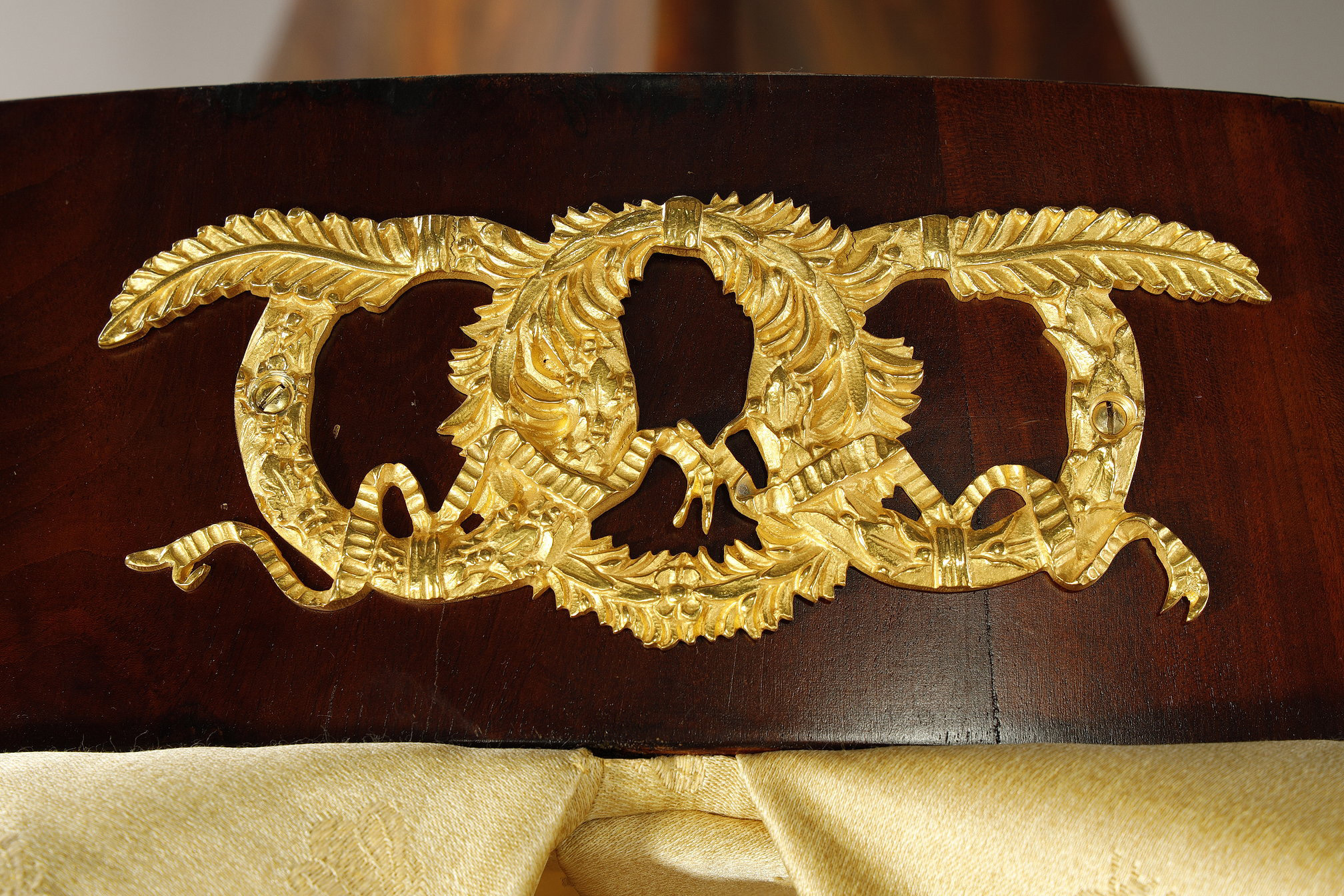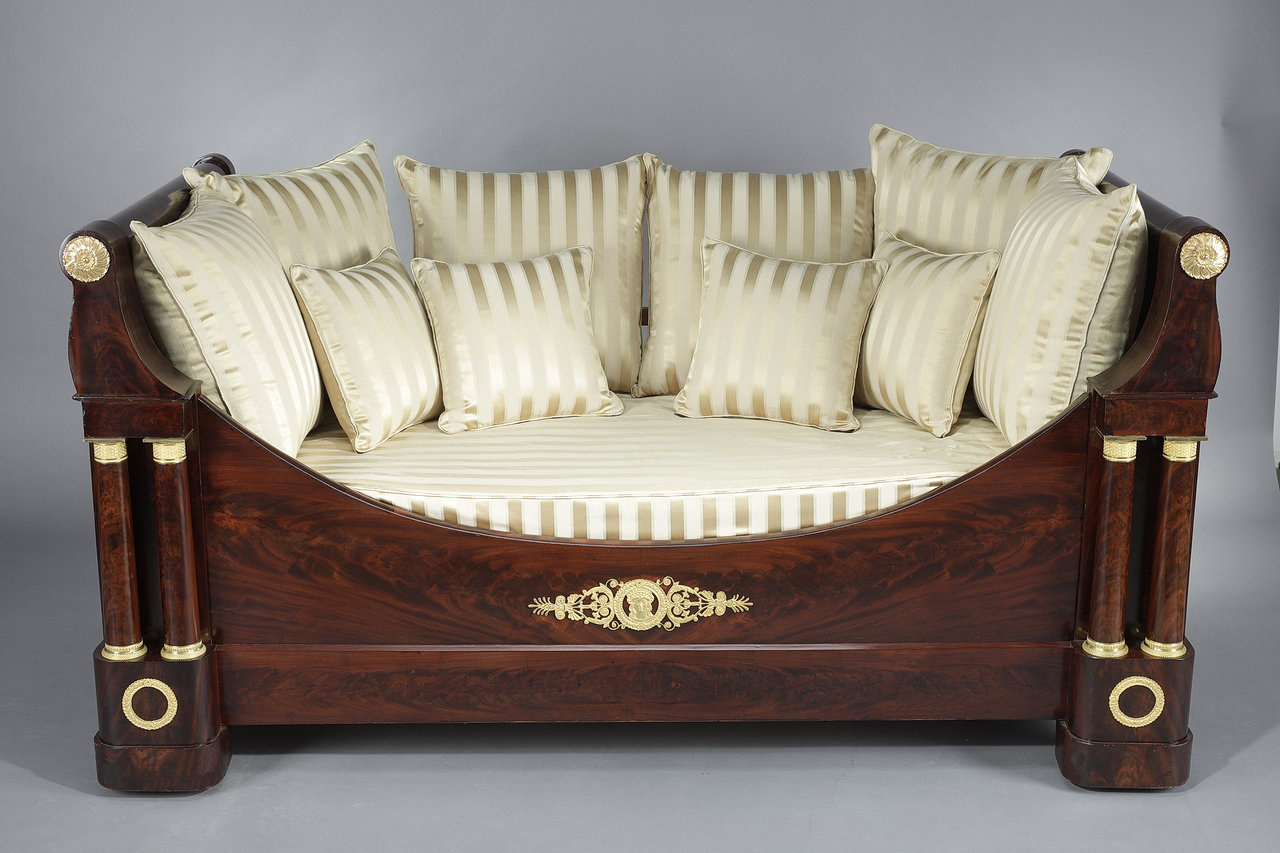The "bateau" bed, a star of the Empire period
04.02.21
The "boat" bed, a French invention
In France, the bed "en bateau" was produced during the Directoire period (1795-1799), and was very fashionable during the Empire and Restoration. Its name comes from its shape, which resembles a nacelle, with its characteristic curvature and identical headboards.
The most common Directoire beds have two backrests of equal height, with columnar or baluster-shaped uprights. The back bands, quite wide for this period, curve backwards and are decorated with a rhombus. The crosspiece remains straight, however. The boat-shaped bed became popular and a common piece of furniture during the Empire. It retains the two backrests of equal height, curved outwards in the shape of a crosier or cornucopia, and connected by an equally curved crosspiece, which continues the curve of the backrests. More rarely, a single backrest may be present.
Like other pieces of furniture, the bed is imposing, majestic, a real showpiece. In bedrooms, the bed is no longer placed perpendicular to the wall, but along the longest section of the wall. A "duchesse" bed is when the canopy covers the entire bed, and an "ange" bed when the canopy is reduced to half the length of the bed. The "à la polonaise" bed is topped by a crown or canopy, from which curtains or net curtains fall.
The decor of the "bateau" bed under the Empire
Under the Empire, the ornamentation of bronze, which is sparingly distributed with a great concern for symmetry, is particularly remarkable. The uprights of the "boat" bed, which are quite wide, as well as the crosspiece, are decorated with gilded bronze trimmings that emphasise the structure. As this solemn decoration is meant to be seen from the front, the wall side is not decorated.
The most famous models, made by G. Jacob or other famous cabinetmakers, feature rich mythological or allegorical decorations of the highest quality, such as the example preserved at the Musée des Arts décoratifs in Paris, whose décor around Amour et Psyché is a variation on the theme of sleep.
Favorite motifs include the Egyptian-inspired stylized palmette, oak, laurel or ivy leaves, sometimes arranged in a crown, sphinxes, swans, dolphins, winged lions, bees, eagles, lyres, trophies and stars. All these flat or raised motifs , affixed to bed frames, are admirable for their fine chasing and precise modeling.
Boat beds in the Atena collection
The three "bateau" bed frames in our collections are top-quality models, beautifully illustrating the Empire and Restoration aesthetic. At once simple and imposing, heavy and delicate, they exude a grandeur that is not without beauty.
Each bed comes with or without canopy:






